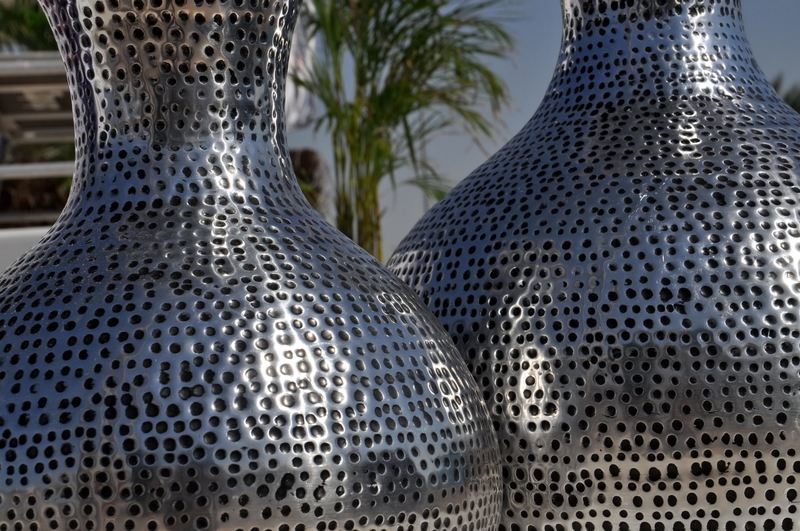From Heavy Lifting to Precision--Why Piano Moving Isn't for Amateurs
Moving a piano is a task that blends brawn and brains, demanding both physical strength and technical skill. While it might be tempting to gather a few friends and try to handle a piano move yourself, this is a job best left to experienced professionals. In this comprehensive guide, we'll explore why piano relocation is a specialized task, the dangers and challenges involved, and how trusting expert piano movers can save you time, money, and--most importantly--your beloved instrument.

The Unique Nature of Piano Moving
The Anatomy of a Piano: More Than Meets the Eye
At first glance, a piano might seem like just another heavy piece of furniture. In reality, it is a marvel of mechanical and acoustic engineering. Even the most basic upright pianos commonly weigh over 300 pounds, while concert grand pianos can tip the scales at 1,200 pounds or more.
- Upright Pianos: Typically between 300-500 lbs, but taller models can be heavier
- Grand Pianos: Range from 500 to 1,200 lbs depending on length and brand
- Delicate Components: Over 10,000 moving parts in some models
- Veneer & Finish: Easily scratched or damaged by improper handling
Not only are they incredibly heavy, but pianos are also awkwardly shaped and delicate. The polished wood finish, internal strings, and complex mechanics require precision and care. Unlike standard household items, moving a piano isn't just about brute force--it's about understanding balance, leverage, and protection.
Common Hazards Faced By Amateur Piano Movers
Many homeowners underestimate just how risky DIY piano moving can be. Here are some of the dangers involved:
- Personal Injury: Strains, sprains, and more severe injuries often result from improper lifting techniques.
- Piano Damage: Banged corners, broken pedals, cracked soundboards, and destroyed legs can render a piano unplayable or drastically lower its value.
- Property Damage: Walls, floors, stairs, and doorways can all suffer from an amateur attempt to navigate tight spaces.
- Costly Repairs: Fixing or restoring a damaged piano can easily exceed the cost of hiring professionals in the first place.
Why Piano Moving Requires More Than Muscle
Specialized Equipment and Tools
Piano moving professionals arrive with an arsenal of specialized tools designed to safely transport your instrument:
- Piano Dollies: Heavy-duty, cushioned platforms with wheels for easy maneuvering
- Moving Straps and Harnesses: Distribute weight evenly and permit secure gripping
- Padded Blankets: Protect the finish from scratches and scrapes
- Skid Boards: Facilitate moving over uneven surfaces, stairs, and doorways
- Padding and Corner Guards: Prevent sharp edges from damaging surroundings
Attempting to move a piano without proper equipment is a recipe for disaster. Tools like these are rarely found in an ordinary household and are a testament to why moving a piano calls for specialists.
Precision Planning and Execution
The most challenging part of moving a piano is not lifting it, but moving it safely and accurately. Professional piano movers start by planning the most efficient and secure route from A to B, which includes:
- Measuring doorways, stairwells, and hallways
- Identifying and preventing potential obstacles (like low ceilings, narrow landings, or sharp turns)
- Disassembling and reassembling parts as necessary
- Protecting not just the piano but your home surroundings
It's a game of inches, not feet. A miscalculation can result in disaster, which is why every move requires deliberate, precise actions.
Understanding Piano Anatomy and Handling Weak Points
Every piano has weaknesses--areas that are particularly vulnerable during a move. For instance, the legs and pedals of grand pianos can snap easily if weight is inappropriately distributed. The cast-iron plate inside the instrument, while strong, must not be subjected to sudden shocks. Piano movers are trained to handle these sensitive areas while keeping the instrument stable and secure throughout the move.
Potential Consequences of Amateur Piano Moving
Personal Injury: It's Not Just a Sore Back
According to the Bureau of Labor Statistics, lifting injuries are among the top causes of home-related accidents. Pianos are even more dangerous because of their massive weight and clumsy bulk. Injuries can include:
- Back and Neck Strains
- Crushed Fingers or Toes
- Slips, Trips, and Falls
- Serious Musculoskeletal Damage
Professional movers have the strength, training, and teamwork to avoid these accidents, whereas untrained individuals are at significant risk.
Damage to Your Piano: More Than Cosmetic
Superficial scratches and dents are bad enough, but internal damage to a piano can be catastrophic, affecting the way it sounds and plays. Broken keys, warped frames, cracked soundboards, and damaged strings often occur when amateurs forget to account for the instrument's fragile components. Restoration of such damage can cost thousands of dollars or, worse, be impossible to repair.
Damaging Your Property: Holes in the Wall, Dings on the Floor
It's easy to overlook how easily a piano can gouge floors, scratch banisters, or punch through drywall. Stairways and tight turns present the greatest peril, especially if the instrument slips and becomes uncontrollable.
The Hidden Costs of Cutting Corners
What may seem like a cost-saving DIY project can quickly escalate into a series of expensive mistakes. These include:
- Piano Repairs: Professional tuning or restoration after the move
- Home Repairs: Fixing floors, walls, or doorframes
- Personal Medical Costs: Treatment for injuries
- Equipment Rental: Specialized tools are not cheap to rent
Factor in all these costs, and hiring a professional piano mover often ends up being the prudent choice.
Benefits of Hiring Professional Piano Movers
Expertise and Experience
Piano moving experts have handled hundreds, if not thousands, of moves across all makes and models. They understand the unique balance and stress points of specific instruments and know how to adapt their methods to vary each situation. This experience minimizes risk to your property and instrument.
Comprehensive Insurance Protection
Professional piano moving companies are insured and bonded, meaning that in the unlikely event of damage, your investment is protected. Uninsured, non-professional movers cannot offer the same peace of mind.
Time and Efficiency
Professionals can complete a move in a fraction of the time it might take amateurs. Their planning and experience mean fewer mistakes, faster transit, and less disruption for you and your household.
Proper Transportation
Dedicated piano moving vehicles are equipped with air-suspension systems, ramps, and locking devices to ensure that your piano rides smoothly and arrives safely at its new location. Standard moving vans lack these features, increasing the risk of damage during transport.

FAQs About Piano Moving and Why You Should Leave It to the Pros
1. Can't I Just Move an Upright Piano Myself?
While upright pianos are smaller than grand pianos, they are still bulky and heavy, and just as prone to damage if moved incorrectly. The risks to both you and your home are simply not worth it.
2. How Do Professionals Move Baby Grand or Grand Pianos?
Professionals often disassemble major components, such as the legs, lid, and pedal lyre, before moving the piano body on a skid board. This minimizes stress on fragile parts and allows controlled movement through doorways and around corners.
3. How Should I Prepare My Piano for Moving?
Remove all items from the top, secure the lid if possible, and ensure a clear path for movers. Let professionals handle the rest.
4. Is It Necessary to Tune My Piano After a Move?
Most experts recommend tuning a piano after it has acclimatized to its new environment, as changes in humidity and movement can affect the instrument's pitch.
5. How Much Does It Cost to Professionally Move a Piano?
Costs vary based on the size and type of piano, destination distance, staircases, and other obstacles. However, compared to the cost of repair or replacement, professional piano moving is an affordable investment in your peace of mind.
Piano Moving--A Job for Precision, Skill, and Care
From heavy lifting to expert-level handling, piano moving is a multifaceted task that is far more complex than it may appear. It requires specialized knowledge, tools, and a commitment to safety--attributes only found in trained, experienced professionals.
Don't risk your health, your home, or your treasured instrument. When it comes to piano transportation, moving, and relocation, always trust the job to professionals who understand both the science and the art behind one of the world's most magnificent musical instruments.
For a flawless move and peace of mind, let the experts handle the heavy lifting--so you can get back to making beautiful music.



